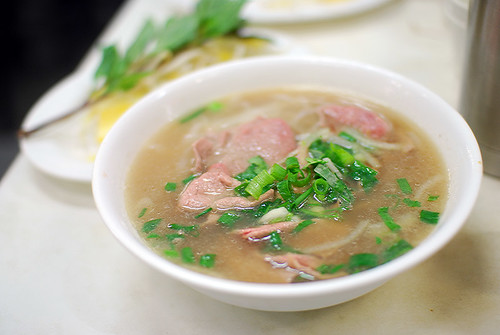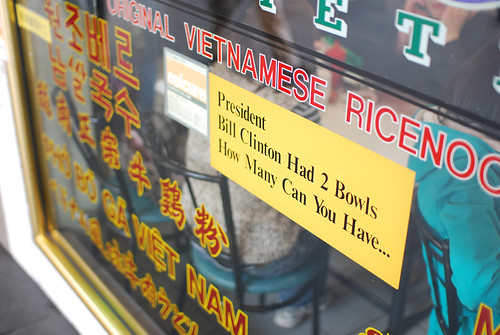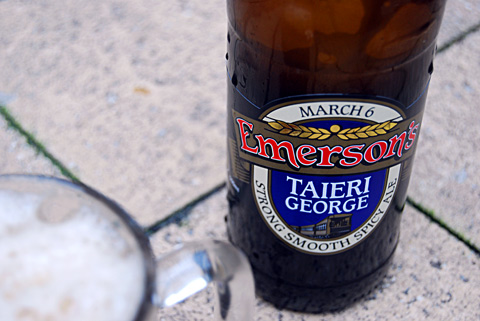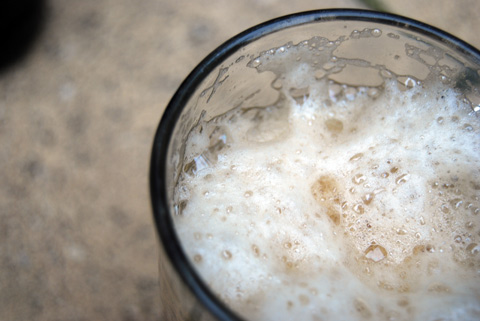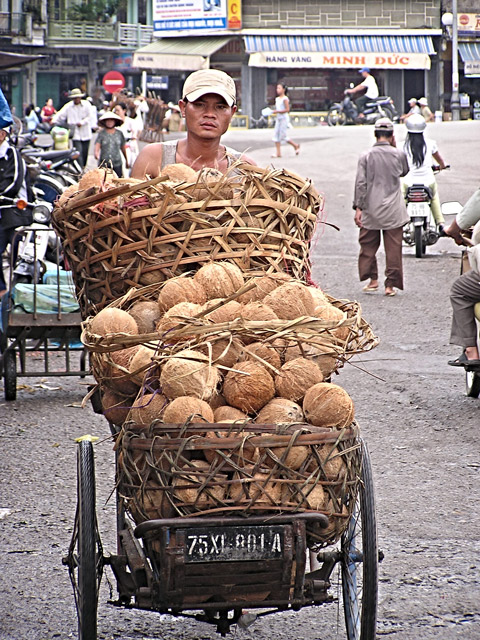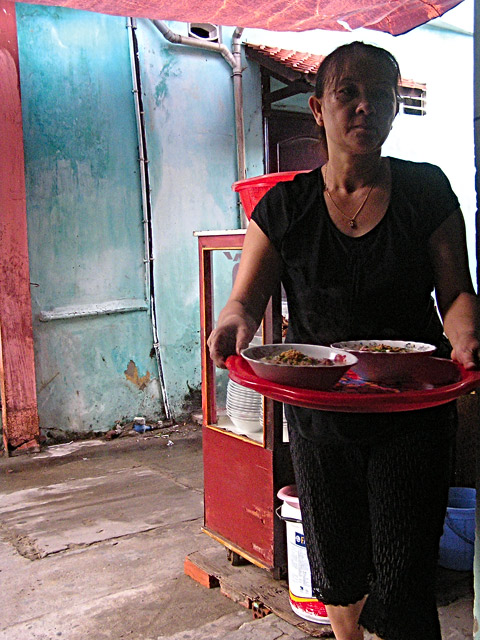When Dickens’ Ghost of Christmas Future Yet Come decides to take me out to dinner, he’d probably take me to Vue De Monde to wallow amongst the Baby Boomer dugongs in suits and pearls. That crystalline vision into how my life would transpire if I spent the next twenty odd years focusing upon crapulence would scare me much more than a pauper’s grave.
It did scare me.
This is no fault of Shannon Bennett’s, the oft lauded chef behind the restaurant frequently name-dropped as the best restaurant in Australia.
The only thing that Bennett has left lacking from Vue de Monde is a sense of pomposity. If you were fresh from doing the rounds of France’s most ostentatious eateries I’m not sure whether this would delight or disappoint. The room at Normanby Chambers in Little Collins St, Melbourne is lit with bare strings of oversized, chromed bulbs, the focus of the entire room being upon the open kitchen with mirror above the staff doing the plating. The architectural message is that you’re there for the food and for the front-of-house theatrics that accompany it.
(The Laguiole silverware is a little pompous but much like a Hard Rock Café, it is available for purchase in the gift shop. The fish fork would be a handy piece of equipment for aerating compost.)
It isn’t the level of service that sets apart Vue de Monde but its distinctiveness. It is not a slavish attentiveness that is confused for service at many a fine dining establishment but the ability of staff to have some agency in their roles. If I was making a bad decision in choosing a wine or dish or attempting to customise something to meet my foolish caprices, I get the feeling that Vue De Monde’s crew would tell me that I’m making a grave mistake in no uncertain terms rather than an obsequious “has Sir considered the…”-type suggestion.
The egalitarian service is the most Australian element of the whole experience but does rest upon retaining and training the best of staff, the people that you can rely upon to chat comfortably about how a thermomixer works or the technique used to turn parmesan into a rough sand. Delicious, delicious sand. There is no menu; you submit yourself to the whims of those service staff. They can be steered in a particular direction but the absolute and final control over your food is out of your hands. They chose:
Amuse bouche: A single cos lettuce leaf containing a smear of jamon paste and a sous-vide quail egg balanced atop a wine glass half filled with silky ham consommé and pea foam.

Salmon attacked from all sides: smoked, sliced, jerked, creamed; some sort of dried fish foam (salted cod, perchance?) and a frankly superfluous layer of gelatinized something. There is caviar and micro-herbage. Cubes of fried sourdough on each end.
Mushrooms: tubes of liquified Swiss Brown (?), slightly gummy and al dente on the outside but squirting silky shroom juice from within; with pan-fried shimeji (?) and slices of eringi(?); tarragon emulsion. My mushroom identification skills would kill me in an unforgiving forest.
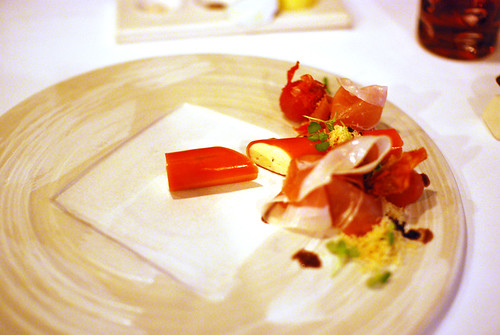
Gel cannelloni with powdered parmesan cheese and olives; two perfectly ripe cherry tomatoes topped with their own dried skin; some respectable Serrano ham. Where the hell do you get a tomato this impeccable and ripe in winter? I love technique; the mix of industrialisation of food (gel) with small-producer artisanship (ham). It also seems to look like an in-joke about hot dogs, to which I am obviously not averse.
Foie gras, frozen in liquid nitrogen then powdered in a thermomixer, served cold with a dash of “Thai” curry sauce (poured at the table) and three flawless nasturtium leaves. I wish that I could get dispensation for punching people every time that they call a curry “Thai” because it contains coconut milk. But the foie gras, melting on the tongue, is awe-inspiring and smooth like chocolate.
Cold shot of verjus with hibiscus tea, served in a martini glass.
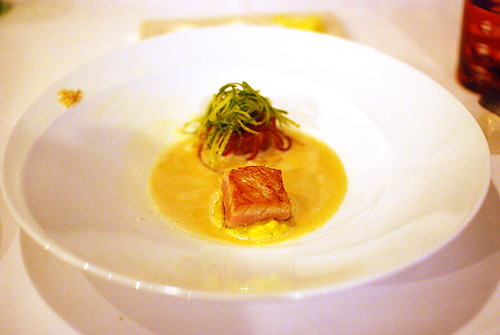
A dainty square of toro on a perfect corn puree; tuna ceviche topped with glass noodles soaked in a lightish soy, shredded fennel(?) and something else green. All surrounded by tuna bone stock and butter. A microdot of sesame salt on the side. By this point my palate is pretty much shot from all the permutations of fat.
Hare: two slices of hare loin on pureed, roasted garlic; a gamy hare jelly; yeast foam; a sourdough lattice. More microherbs.
We skipped out on dessert. I would possibly have burst an internal part. My stomach is still not well trained back into ingesting huge quantities of high fat, Western food. I walked out feeling like somebody had inflated a balloon full of rich creamery butter within me. I’m still recovering.
Probably the only complaint that I could muster was the umami-ness of nigh on everything; all playing on the centre and back of the palate rather than forcing anything to the edges of sour, astringent or bitter. I could have probably specified against this in advance. I’m sure that if you’re a much bigger aficionado of French cuisine, you’d pointy out that I’m missing much of the subtlety but the effect of having so much umami does feel like the chefs aren’t painting from the full palette available to them.
Price: we ate and drank at roughly the speed of $1 per minute per person, for three hours. You do the math.
Location: Vue de Monde, 430 Little Collins Street, Melbourne, Australia
Phone: +61 3 9691 3888.

